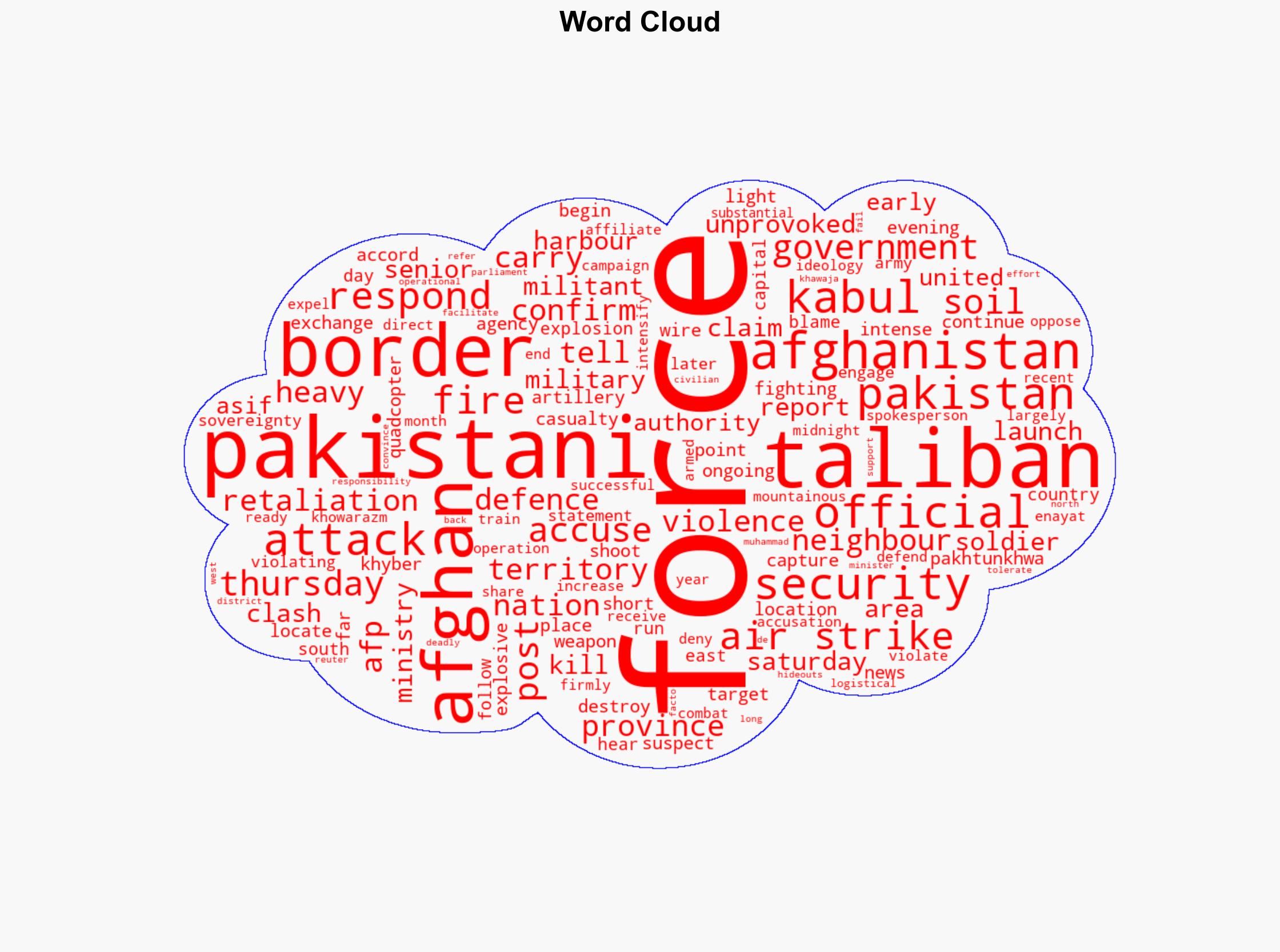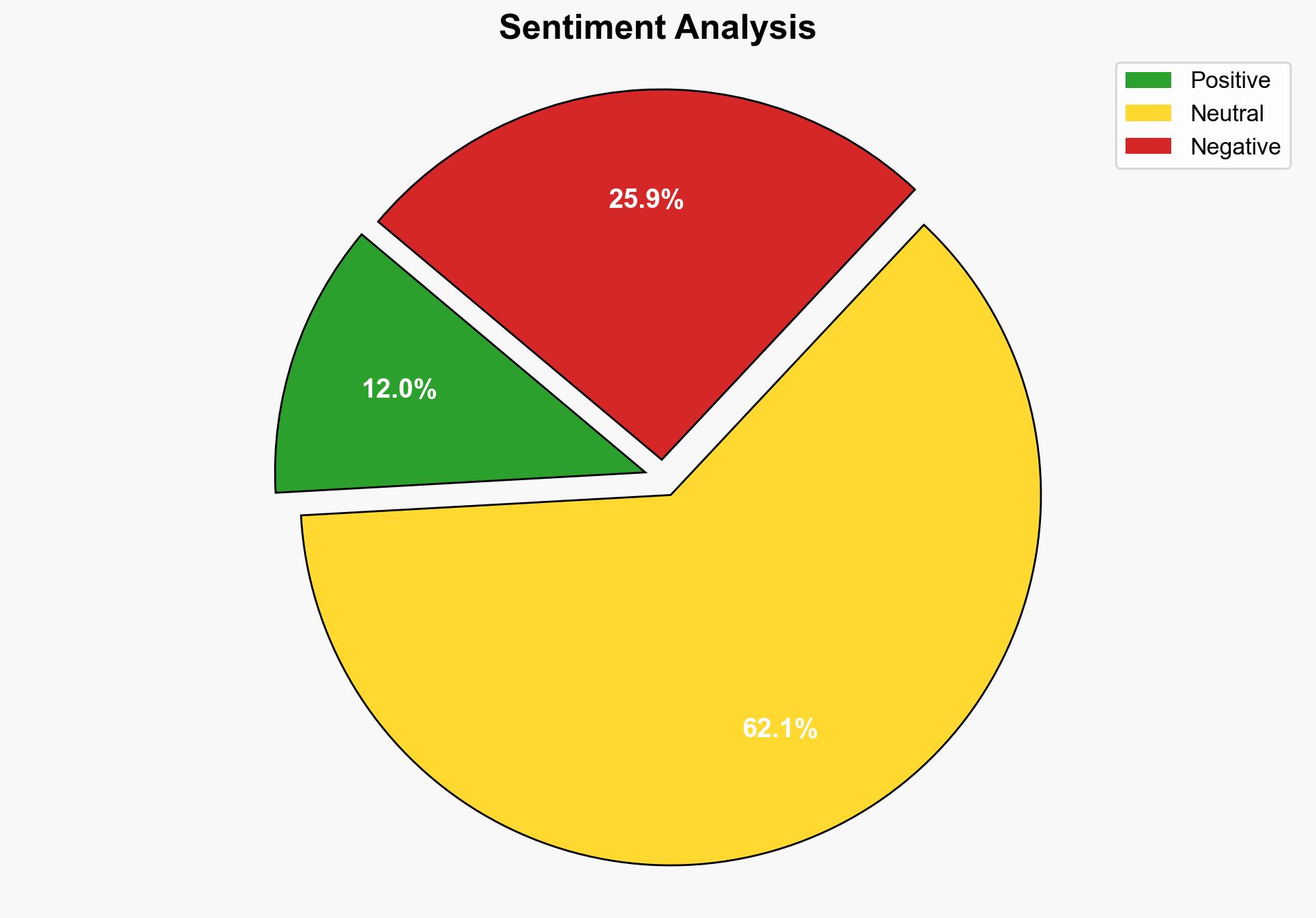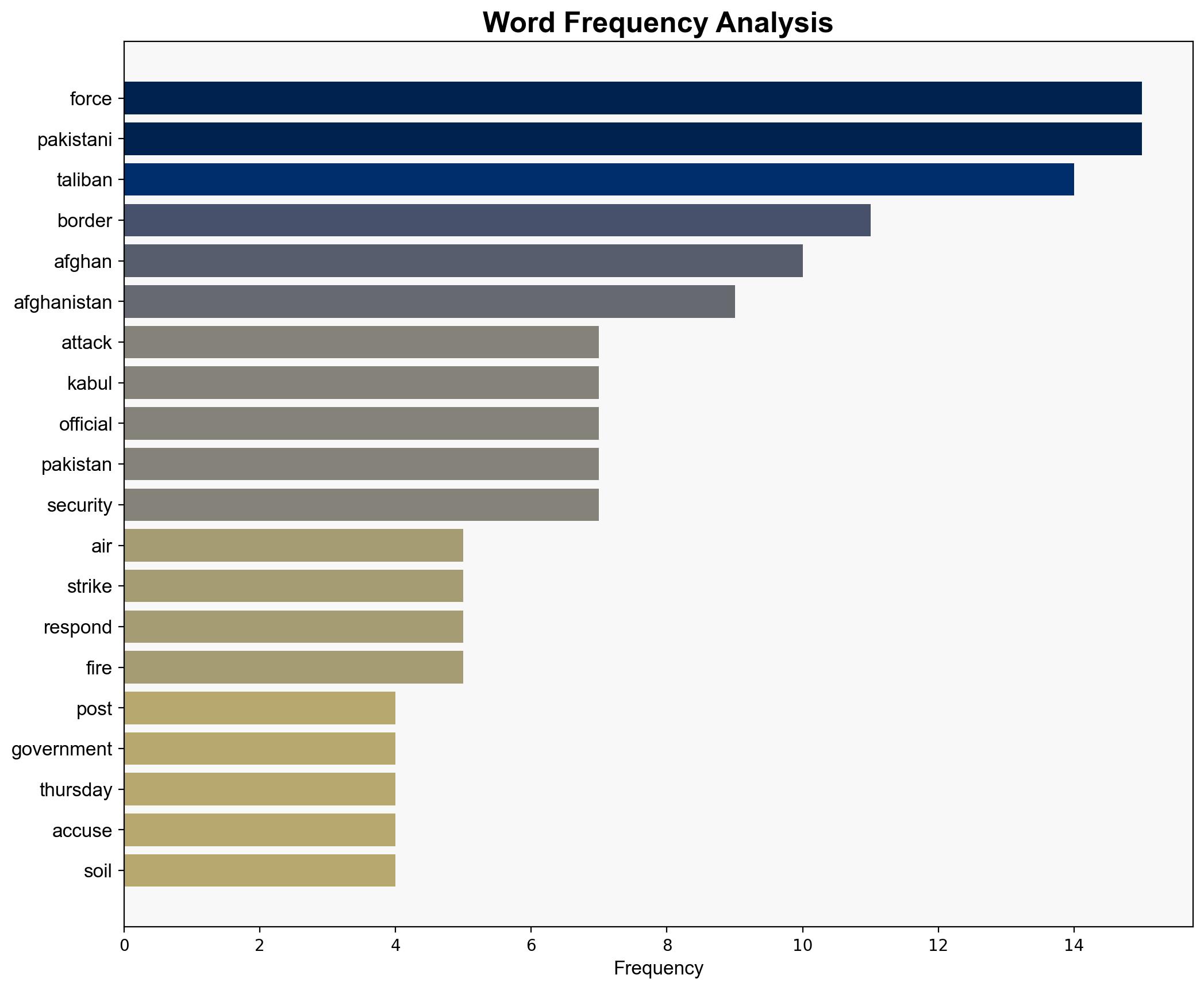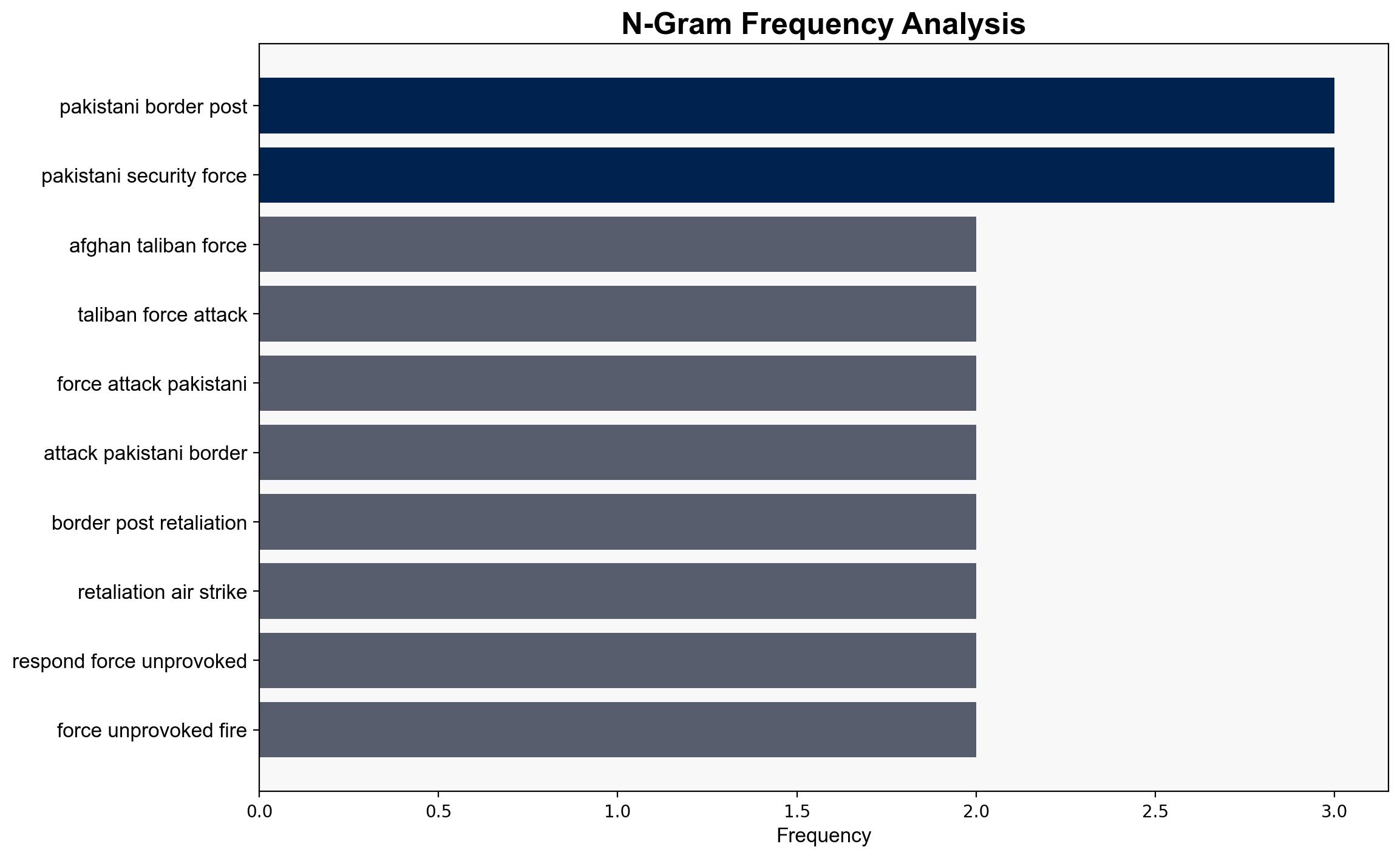Afghan Taliban Pakistani soldiers fight along border after Kabul air strike – ABC News (AU)
Published on: 2025-10-12
Intelligence Report: Afghan Taliban Pakistani soldiers fight along border after Kabul air strike – ABC News (AU)
1. BLUF (Bottom Line Up Front)
The most supported hypothesis is that the recent border clashes between Afghan Taliban and Pakistani forces are a direct retaliation for Pakistani air strikes in Kabul, with a medium confidence level. This situation highlights escalating tensions and the potential for increased cross-border violence. It is recommended that diplomatic channels be prioritized to de-escalate tensions and prevent further military engagements.
2. Competing Hypotheses
Hypothesis 1: The Afghan Taliban’s attack on Pakistani border posts is a direct retaliation for the Pakistani air strike in Kabul, aimed at asserting territorial sovereignty and deterring future incursions.
Hypothesis 2: The clashes are part of a broader strategy by the Afghan Taliban to destabilize the region, leveraging border tensions to strengthen their position against both the Pakistani government and internal dissent.
3. Key Assumptions and Red Flags
Assumptions:
– Hypothesis 1 assumes that the Afghan Taliban’s primary motivation is retaliation for specific actions by Pakistan.
– Hypothesis 2 assumes a strategic, long-term plan by the Taliban to exploit regional instability.
Red Flags:
– Lack of independent verification of the events and casualty figures.
– Potential bias in reports from both Afghan and Pakistani sources.
– Inconsistent statements regarding the initiation of hostilities.
4. Implications and Strategic Risks
The ongoing conflict risks escalating into a broader regional confrontation, potentially drawing in other actors and destabilizing the region further. Economic impacts could arise from disrupted trade and increased military spending. Geopolitically, this may strain Pakistan’s relations with both Afghanistan and international allies. The psychological impact includes heightened fear and insecurity among border populations.
5. Recommendations and Outlook
- Engage in diplomatic efforts to mediate and de-escalate tensions between Afghanistan and Pakistan.
- Enhance intelligence-sharing mechanisms to better monitor and predict cross-border militant activities.
- Scenario Projections:
- Best Case: Successful diplomatic intervention leads to a ceasefire and resumption of dialogue.
- Worst Case: Escalation into a prolonged conflict, drawing in additional regional actors.
- Most Likely: Continued sporadic clashes with intermittent diplomatic engagement.
6. Key Individuals and Entities
– Khawaja Muhammad Asif (Pakistani Defence Minister)
– Enayat Khowarazm (Taliban Defence Ministry Spokesperson)
7. Thematic Tags
national security threats, counter-terrorism, regional focus




